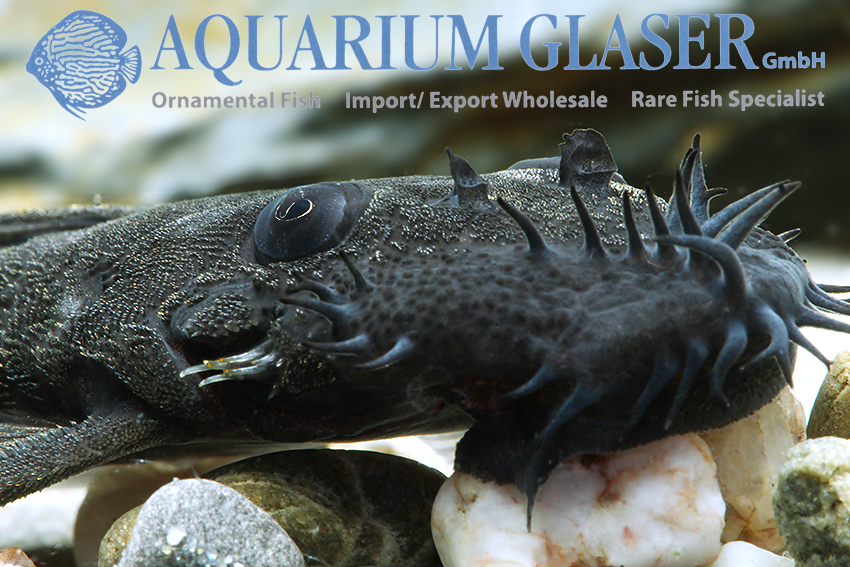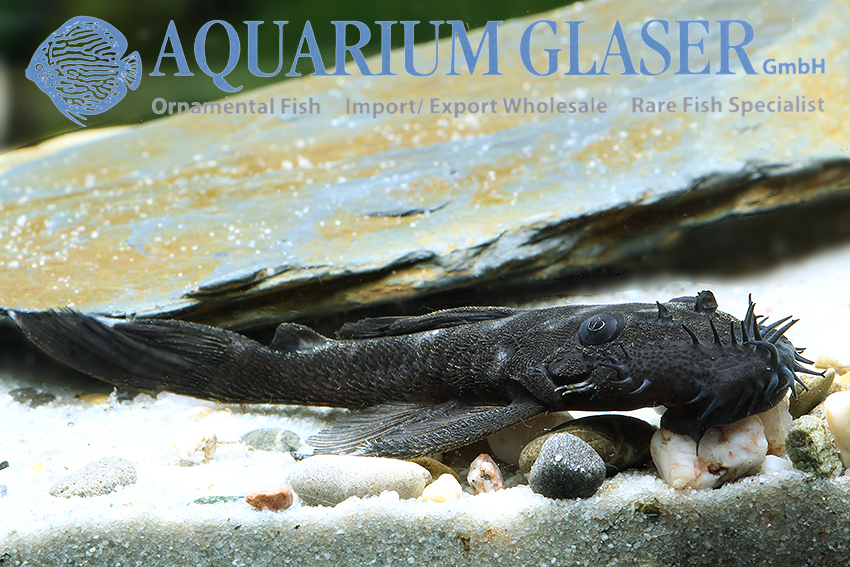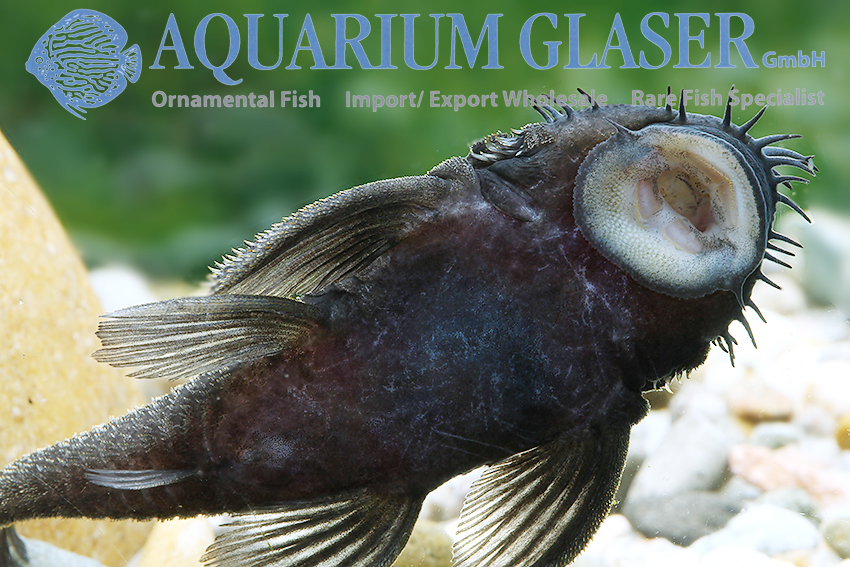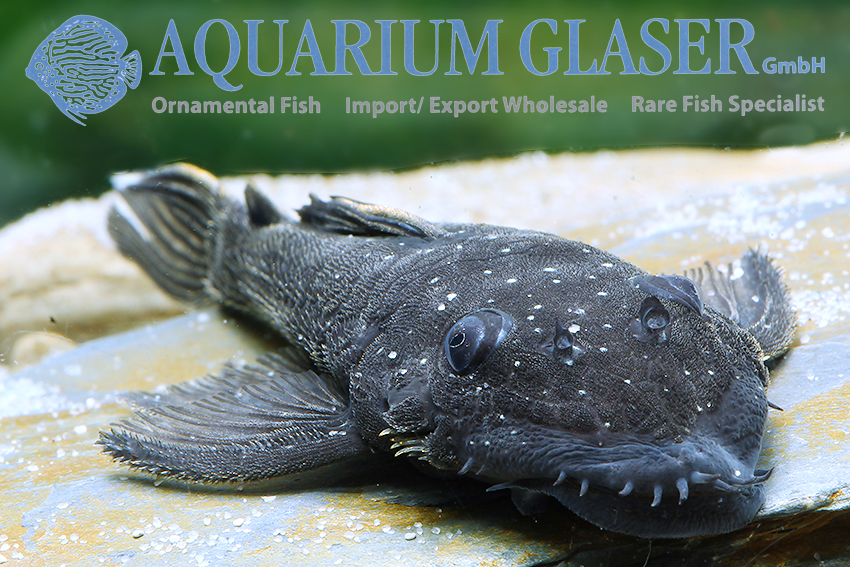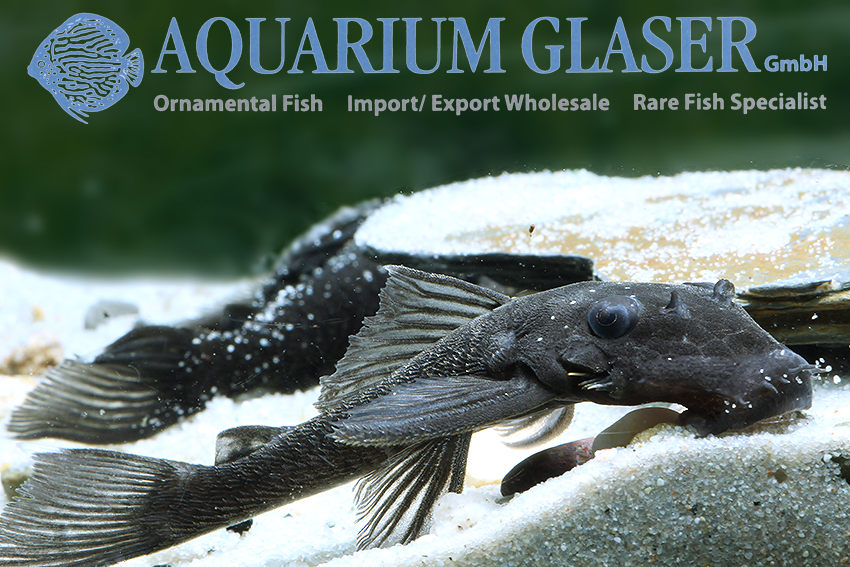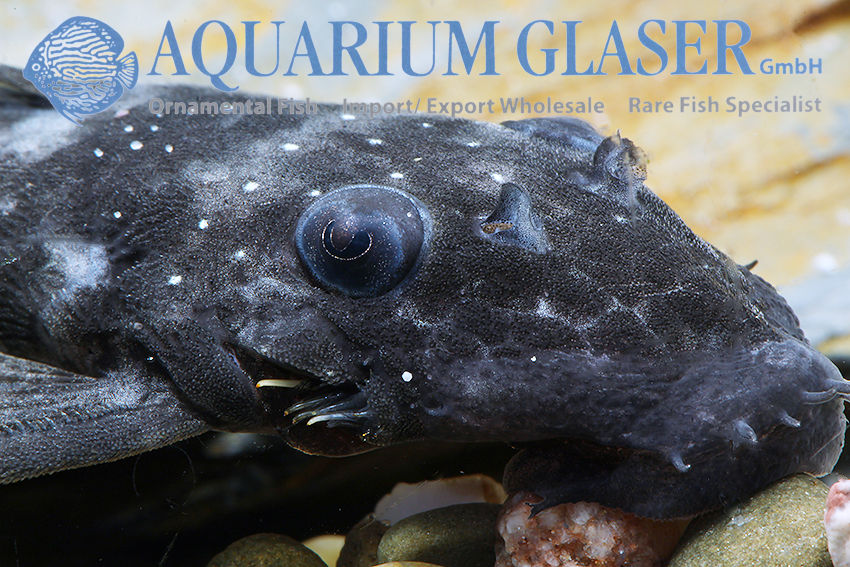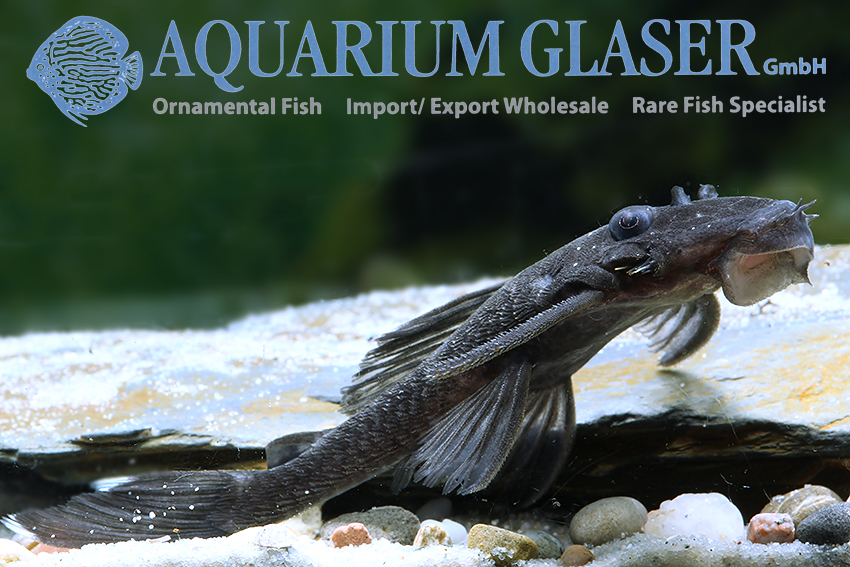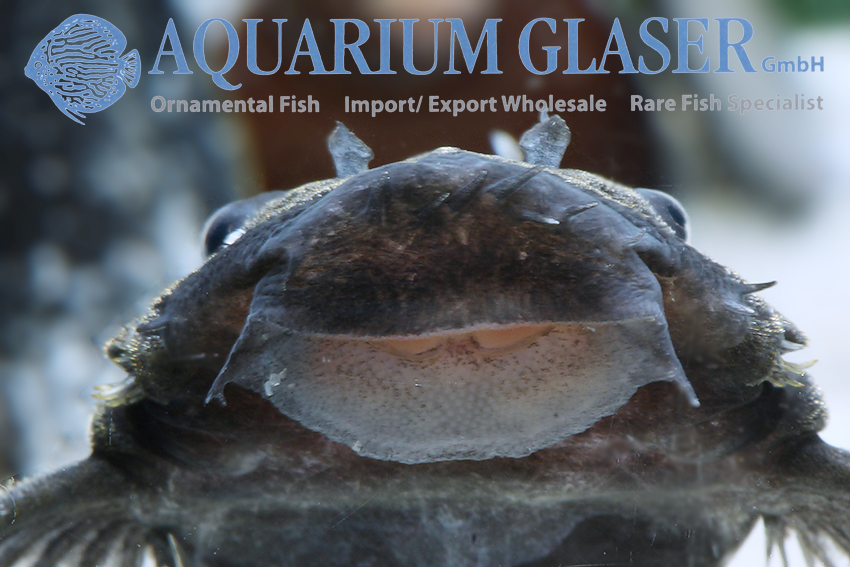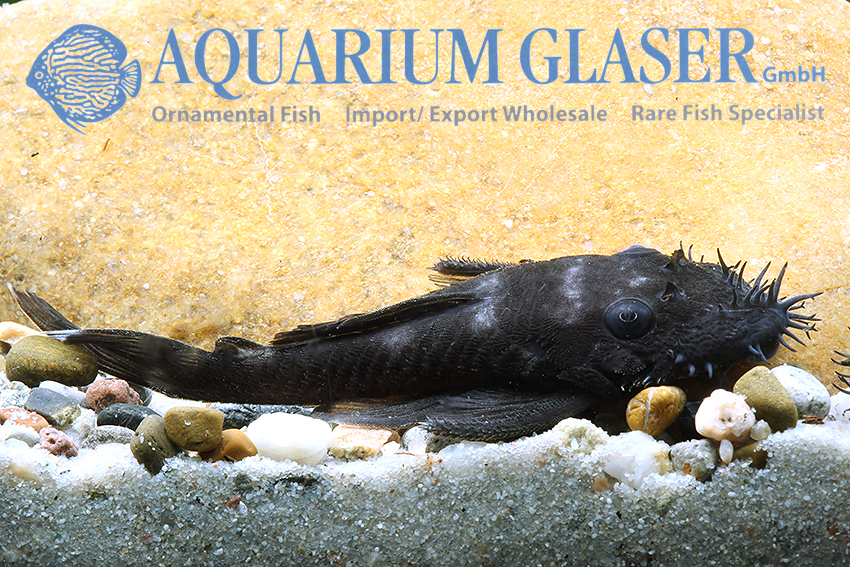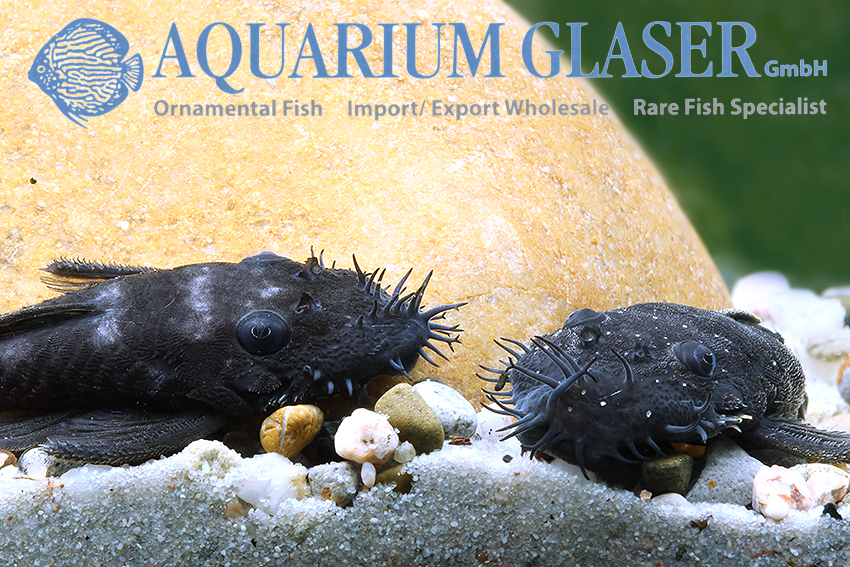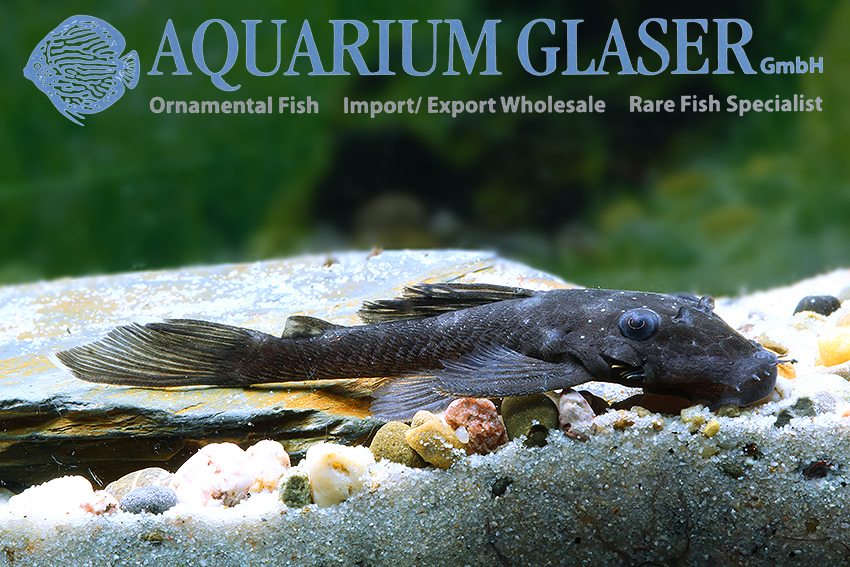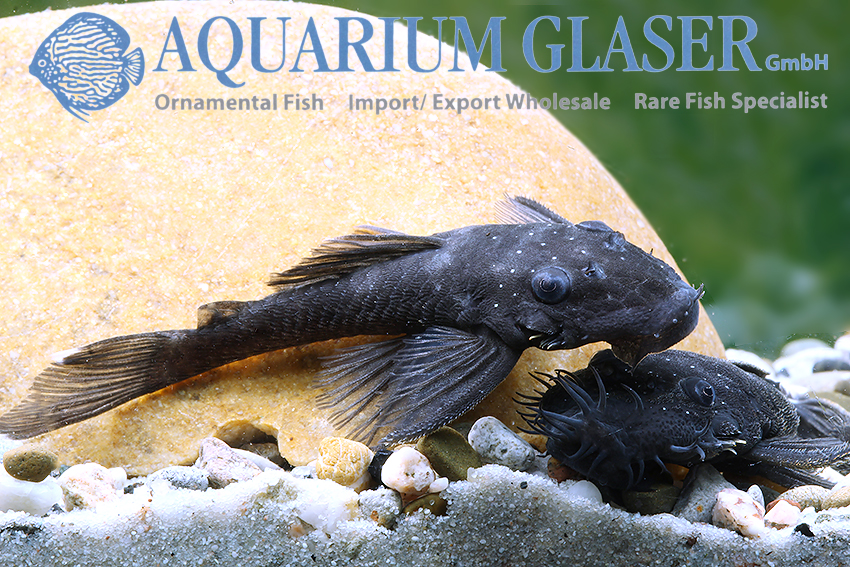From time to time we receive a very flat-bodied Ancistrus from the Orinoco drainage in Colombia and Venezuela under the name of A. ranunculus/L 34. However, this species does not exist there, A. ranunculus is only known from the Amazon tributaries Xingu and Tocantins/Araguaia; the Orinoco species is Ancistrus macrophthalmus, which has received the LDA number 74.
The easiest way to distinguish between the two is by the caudal fin, which in A. macrophthalmus is always distinctly pointed above and below and has white tips. In A. ranunculus the caudal fin appears truncated, sometimes even slightly rounded above and below. In males there is another easily recognizable difference: A. ranunculus never has “antennae” on the middle of the snout towards the forehead, A. macrophthalmus does.
Regarding coloration, most A. macrophthalmus are pure black (with a bluish tinge under suitable light), but they may also have small white spots. Both color forms can be found mixed in the same import. When A. macrophthalmus is nerved, light transverse stripes appear over the back. The large eye and the dusky coloration already show that A. macrophthalmus is a crepuscular animal, which only comes out of its hiding place during the day after a longer period of acclimation. Otherwise the usual care conditions for Ancistrus apply, with the restriction that A. macrophthalmus likes it warm and is comparatively oxygen-demanding.
For our customers: the animals have code 26480-LDA 074-2 on our stocklist. Please note that we exclusively supply the wholesale trade.
Text & photos: Frank Schäfer





